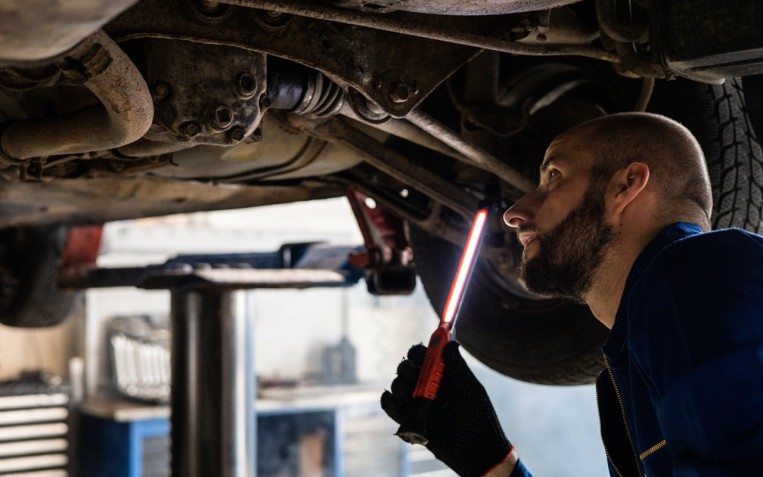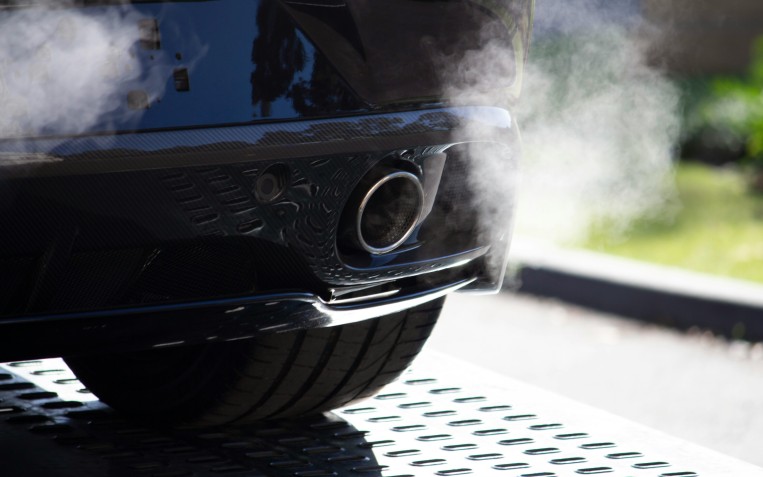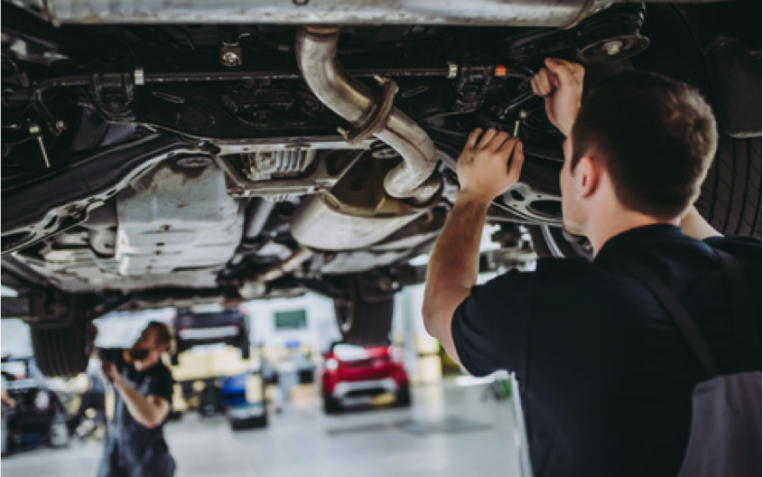10 ways to help your car pass its MOT

Did you know that a massive 40%* of vehicles fail their MOT test first time? And, even worse, nearly 50%* of all faults found during the test could have been avoided! Save time and money by doing some simple checks and maintenance before you visit the MOT test centre and help your vehicle to pass first time.
PTA Garage Services have compiled the top ten ways which could help you to avoid failing your MOT.
1. Lights
According to the DVSA, 30%* of all MOT faults are related to your vehicle’s lights. Fortunately, checking your lights is one of the easiest tests you can perform at home. Simply turn on your headlights, fog lights, indicators and hazards and check that they are all in working condition. For your brake lights, ask someone to stand behind your vehicle as you press the brake pedal to see if they light up when required. If you have a broken bulb, you can buy a new one and fit it yourself following the guidelines in your car handbook or you could visit your local PTA Garage Services branch if you do not feel confident undertaking this yourself.
It is also worth remembering that incorrectly coloured lights could also cost your MOT test. If your lights were not installed by the manufacturers you should ensure that they are legal. Headlights should be white whilst brake lights need to be red.
2. Tyre Tread Depth
Incorrect tread depth can also result in an MOT test fail. You should regularly check your tread depth at home as tyres with low tread have limited gripping capabilities and can put your safety at risk. More importantly, if the tread depth is below 1.6mm then the tyre is deemed illegal. Learn how to check your tread depth here.
3. Tyre Condition
You should check your tyre sidewall for damage such as cracks, cuts, lumps and bulges as these conditions can also result in an MOT test fail. If you do find such damage contact a tyre specialist immediately as these elements can significantly decrease the safety of your tyres. Take a look here for some tips on maintaining your tyres.
4. Windscreen
Whilst driving, it is vital that you have a clear view of the road ahead, so if this is at all obscured there is a possibility you could fail your MOT test. If there is any damage on the windscreen larger than 10mm in the swept area directly in front of the driver (known as ‘zone A’), or 40mm in the remaining area of the windscreen (‘zone B’), then you will need to get your windscreen replaced. Any damage smaller than 10mm or 40mm can sometimes be repaired, so ensure a specialist properly assesses it before you attend the MOT test.
Any stickers, toys or objects directly in the driver’s view will also result in a test failure so ensure that anything potentially obscuring your vision is removed.

5. Wipers and Washers
Although they may not seem vital to road safety, your windscreen wipers and washers contribute to the driver’s view of the road. Ensure that your wipers work and check that they do not show any signs of damage. You should also top up your screen wash and test your washers before heading to your MOT test.
6. Brakes
If you have noticed that your brakes are no longer performing as effectively, they make strange noises or your vehicle pulls to the side when you brake, you should get them inspected immediately. As well as posing a serious risk to yourself and other road users, damaged or faulty brakes will be an instant MOT fail. It is also worth checking your brake fluid levels and topping it up if it has dropped below the recommended markings.
7. Seat Belts
All the seat belts in your vehicle must also be in good condition and perfect working order to pass the MOT test, so you will need to check the entire length of each seat belt to ensure there is no damage. You should also tug each belt sharply to ensure it resists the force as you would expect and then check that it can lock securely in to place.
8. Registration Plates
Your vehicle must display two registration plates (front and rear) which are in good condition and easy to read. If you have fitted custom registration plates it is important that you ensure that they are road legal, following the guidelines put in place by the DVSA.
The VIN (vehicle identification number), usually stamped in to the chassis of the vehicle, should also be displayed and legible.
9. Mirrors
The mirrors fitted to your vehicle also contribute to the driver’s view of the road, so it is vital that you check your wing mirrors and rear view mirror offer a clear and unobstructed view. Make sure that your mirrors are not broken or damaged and if they are, get them repaired before the MOT test. You should also clean them so that the MOT tester can see that your view is not at all impaired.
10. Vehicle Body
Ensure that the body of your vehicle has no serious damage, such as jagged edges, which could potentially cause damage to other vehicles or pedestrians. Furthermore, whilst your car is not checked for its cleanliness, it is worth cleaning your car before the test as MOT testers can refuse to test a dirty vehicle. A clean car may also give the impression that your vehicle is well maintained and looked after, which will help to start your MOT test on a good impression.
Book your next MOT test at PTA Garage Services online here or for more guidance on what is checked during the MOT test, take a look at our breakdown of all the components which will be tested here.
*https://www.gov.uk/government/news/reasons-why-your-car-fails-an-mot
Related Content

What is the difference between Class 4 and Class 7 MOTs?
A Class 4 MOT test is required for passenger vehicles that weigh less than 3,000 kilograms. Class 4 MOT tests, cover a wide range of vehicles, including: Cars (with up to eight passenger seats) Ambulances Taxis Mot...

Why do MOT tests include an exhaust emissions test
In 2023, 3.2% of all MOTs failed due to noise, emissions and leaks according to data from the DVLA. MOT tests include emissions tests to prevent a hig...

Do EVs need an MOT?
One of the benefits of making the switch to an electric vehicle is the many money saving incentives like not having to pay road tax, or for your car t...

